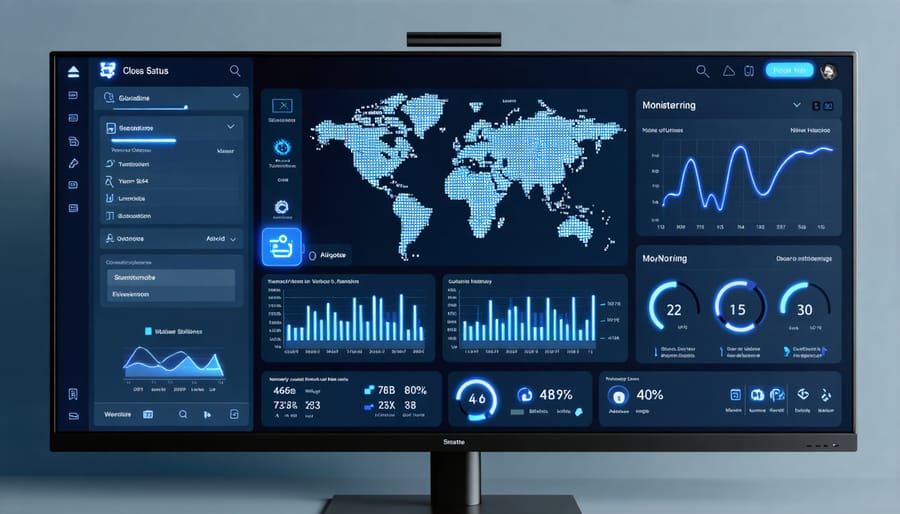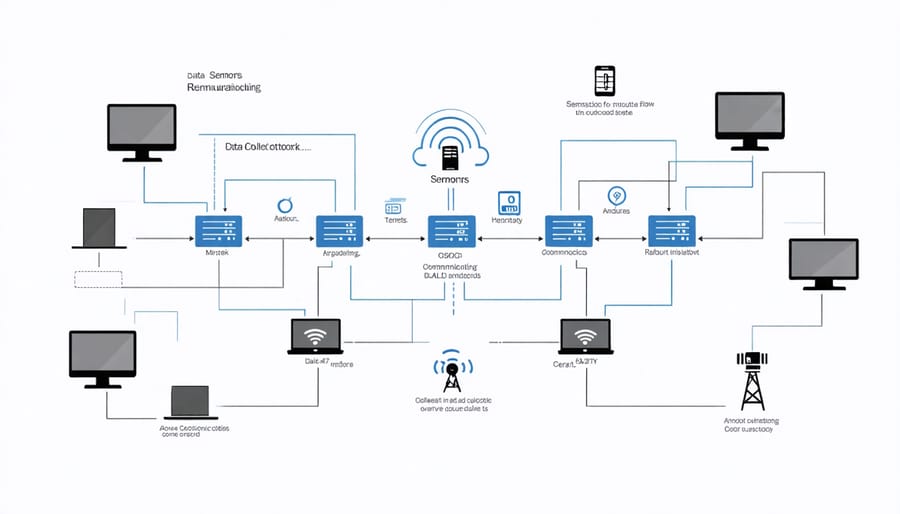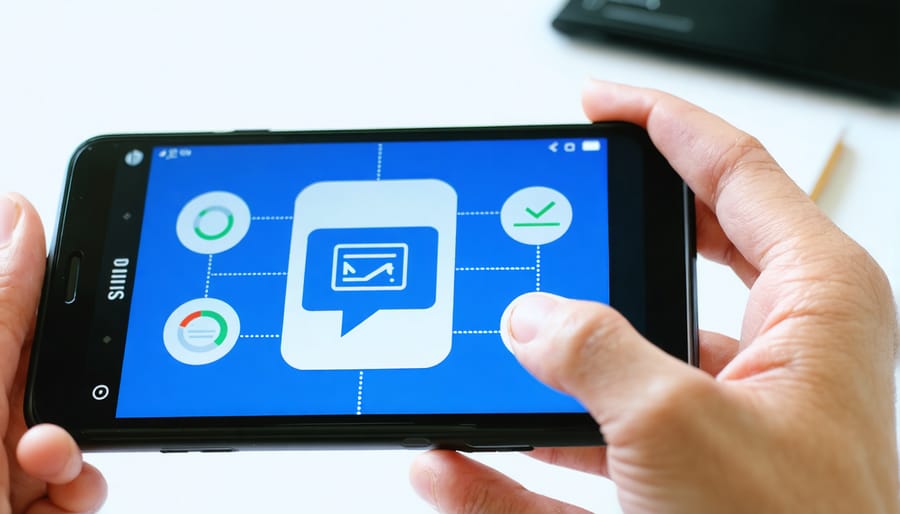Remote Monitoring That Keeps Your Backup Systems Running When You’re Away

Remote monitoring solutions have revolutionized how businesses manage their critical systems, transforming reactive maintenance into proactive system oversight. In today’s interconnected world, where operations span multiple locations and time zones, the ability to monitor, analyze, and respond to system performance in real-time has become essential for maintaining business continuity and operational efficiency.
Modern remote monitoring platforms combine advanced sensor technology, secure data transmission protocols, and intelligent analytics to provide comprehensive visibility into system health, performance metrics, and potential issues before they escalate into critical problems. These solutions enable organizations to maintain 24/7 surveillance of their infrastructure while reducing operational costs and minimizing the need for on-site personnel.
For European businesses particularly, remote monitoring has become increasingly vital as organizations adapt to stricter regulatory requirements for system reliability and data security. The integration of IoT devices, cloud-based monitoring platforms, and automated alert systems creates a robust framework that supports both immediate incident response and long-term performance optimization.
Whether monitoring backup power systems, environmental conditions, or critical infrastructure, these solutions provide the real-time insights necessary for informed decision-making and proactive maintenance strategies, ultimately ensuring business resilience in an increasingly complex operational landscape.
Why Remote Monitoring is Essential for Modern Backup Systems
Real-Time Performance Tracking
Remote monitoring solutions transform how we track and assess system performance by providing continuous, real-time insights into critical operations. Through sophisticated sensors and data collection points, these systems capture and analyse performance metrics 24/7, enabling immediate detection of any deviations from optimal functioning.
The real-time tracking capability allows facility managers to monitor key parameters such as power output, energy consumption, temperature levels, and system health indicators from anywhere with internet access. Advanced analytics platforms process this data stream, generating actionable insights and performance trends that help predict potential issues before they escalate into serious problems.
This continuous monitoring approach delivers significant advantages in operational efficiency. System administrators receive instant notifications about performance anomalies, enabling rapid response to maintain optimal system operation. Historical data collection also supports long-term performance analysis, helping identify patterns and opportunities for system optimisation.
For European businesses and industries, this translates into enhanced operational reliability, reduced downtime, and improved resource management. The ability to track performance metrics in real-time has become particularly valuable in meeting stringent EU energy efficiency standards and sustainability goals.

Predictive Maintenance Capabilities
Modern remote monitoring solutions leverage advanced analytics and machine learning to prevent system failures through early detection of potential issues. By continuously analysing performance data, these systems can identify subtle changes in operating parameters that often precede equipment malfunctions.
The predictive maintenance approach uses real-time sensor data to monitor key indicators such as temperature variations, power fluctuations, and component wear patterns. When these parameters deviate from their optimal ranges, the system automatically generates alerts, enabling maintenance teams to address issues before they escalate into critical problems.
This proactive strategy significantly reduces downtime and maintenance costs while extending equipment lifespan. For instance, the system might detect a gradual decrease in battery charging efficiency, allowing technicians to schedule maintenance during planned downtimes rather than responding to unexpected failures.
The technology also creates detailed maintenance histories and trend analyses, helping facility managers optimize their maintenance schedules and make data-driven decisions about system upgrades or replacements. This comprehensive approach ensures maximum system reliability while minimizing operational disruptions.
Key Components of Effective Remote Monitoring Solutions
Sensor Networks and Data Collection
Modern remote monitoring solutions rely on sophisticated networks of interconnected sensors and data collection systems that work seamlessly together. These networks typically consist of various sensor types, including temperature monitors, voltage meters, current sensors, and environmental monitoring devices, all strategically positioned throughout the facility or installation.
The backbone of these monitoring systems comprises three main components: the sensors themselves, data collection hubs, and transmission infrastructure. High-precision sensors continuously gather real-time measurements, while local data collection units process and temporarily store this information. The transmission infrastructure, utilizing both wired and wireless technologies, ensures secure data transfer to central monitoring stations.
European industry standards emphasize the importance of redundancy in sensor deployment, with backup devices ensuring continuous monitoring even if primary sensors fail. Modern systems employ mesh networking technology, allowing sensors to communicate with multiple collection points and creating a more resilient monitoring framework.
Data gathering processes are typically automated, with customisable sampling rates that can be adjusted based on specific monitoring requirements. Advanced systems feature smart algorithms that can modify collection frequencies during critical events or anomalies, ensuring detailed data capture when it matters most.
The integration of IoT (Internet of Things) technology has revolutionised these networks, enabling more efficient data collection and real-time analysis. This innovation has particularly benefited sustainable energy installations across Europe, where precise monitoring is essential for optimal system performance.

Communication Systems and Connectivity
Reliable data transmission forms the backbone of effective remote monitoring solutions, requiring robust communication systems and network infrastructure. Modern monitoring setups typically employ a combination of wired and wireless technologies to ensure consistent data flow from sensors to central monitoring stations.
For local connections, ethernet networks provide high-speed, secure data transfer, while cellular networks (4G/5G) offer flexibility for remote locations. Many European facilities implement redundant communication paths, combining fiber-optic connections with wireless backups to guarantee uninterrupted monitoring capabilities.
The system’s connectivity requirements depend on data volume and monitoring frequency. Real-time monitoring demands higher bandwidth and more reliable connections compared to periodic data collection. Most contemporary solutions utilize secure protocols like HTTPS and MQTT, ensuring data integrity while maintaining efficient transmission rates.
For remote sites across Europe, satellite communication serves as a viable alternative where terrestrial networks are unavailable. The choice of communication infrastructure should consider factors like geographical location, monitoring requirements, and local network availability to create a resilient monitoring ecosystem.
Analytics and Reporting Tools
Modern remote monitoring solutions incorporate sophisticated data analysis capabilities that transform raw system data into actionable insights. These tools provide comprehensive dashboards featuring real-time performance metrics, historical trends, and predictive analytics that help optimize system operations.
Key reporting features typically include customizable alerts, automated report generation, and intuitive visualization tools that present complex data in easily digestible formats. System administrators can track critical parameters such as power output, equipment status, and environmental conditions through user-friendly interfaces accessible via web browsers or mobile applications.
Advanced analytics engines employ machine learning algorithms to identify patterns, predict potential issues, and recommend preventive maintenance actions. These systems can generate detailed performance reports, compliance documentation, and efficiency analyses that support informed decision-making and system optimization.
The reporting infrastructure allows for data export in various formats, integration with existing business intelligence tools, and secure sharing capabilities that enable collaboration among stakeholders while maintaining data security and regulatory compliance.
Implementation Best Practices
System Integration Steps
Implementing remote monitoring solutions requires a systematic approach to ensure successful integration and optimal performance. Begin by conducting a thorough assessment of your existing infrastructure and defining specific monitoring requirements. This initial evaluation helps identify necessary hardware components and potential system constraints.
Next, establish a secure network infrastructure that supports real-time data transmission. This typically involves setting up dedicated communication channels and ensuring proper firewall configurations to maintain system security while allowing necessary data flow.
Install and configure monitoring sensors at strategic points throughout your system. These sensors should be positioned to capture essential metrics such as power output, temperature, voltage levels, and equipment status. Ensure proper calibration of all monitoring devices to guarantee accurate readings.
Connect your monitoring hardware to a central management platform. This involves installing the necessary software, configuring data collection parameters, and establishing communication protocols between different system components. Set up automated alerts and notification systems based on predefined thresholds.
Conduct comprehensive testing of the entire monitoring system, including communication pathways, data accuracy, and alert mechanisms. This validation phase should simulate various scenarios to ensure proper system response under different conditions.
Finally, train relevant personnel on system operation and maintenance procedures. Document all configuration settings, troubleshooting procedures, and emergency protocols to support long-term system management and optimization.
Remember to regularly review and update your monitoring parameters to align with evolving operational needs and industry best practices.
Security Considerations
Remote monitoring solutions require robust security measures for remote monitoring to protect sensitive data and system integrity. Implementing multi-factor authentication (MFA) is essential for all user access points, ensuring only authorized personnel can interact with the monitoring interface. Encryption protocols, particularly TLS 1.3 or higher, should be employed for all data transmission between monitoring devices and central systems.
Regular security audits and vulnerability assessments help identify potential weaknesses before they can be exploited. It’s crucial to maintain updated firmware and software across all connected devices and establish a clear patch management strategy. Network segmentation should be implemented to isolate monitoring systems from other business networks, reducing the potential impact of security breaches.
Access control lists (ACLs) and role-based permissions ensure users only have access to the functions and data necessary for their responsibilities. Implementing secure boot mechanisms and device authentication prevents unauthorized devices from connecting to the monitoring network. Regular backup procedures for monitoring data, coupled with secure off-site storage, protect against data loss and ransomware attacks.
Organizations should develop incident response plans specifically for their remote monitoring infrastructure and conduct regular training sessions for staff members who interact with these systems. This comprehensive approach to security helps maintain system integrity while enabling efficient remote monitoring capabilities.
Maximizing System Benefits

Setting Up Effective Alerts
Effective alert configuration is crucial for maintaining optimal system performance and preventing potential issues before they escalate. Start by establishing clear alert priorities: critical alerts for immediate action, warnings for potential concerns, and informational notifications for routine monitoring.
Configure threshold-based alerts that align with your system’s specific requirements. For solar installations, essential parameters include power output variations, inverter efficiency, and communication status. Set graduated thresholds to receive early warnings before conditions become critical.
Implement smart filtering to reduce alert fatigue. Consider time-based rules, such as different thresholds for peak and off-peak hours, and correlation rules that group related alerts. This approach helps distinguish between genuine issues and temporary fluctuations.
Designate appropriate notification channels for different alert levels. Critical alerts should trigger immediate notifications via SMS or phone calls, while less urgent matters can be communicated through email or dashboard notifications. Ensure backup notification paths exist for critical alerts.
Create clear escalation procedures for unacknowledged alerts. Define response timeframes and assign backup responders to guarantee that critical issues never go unaddressed. Regular review and refinement of alert configurations is essential – analyse alert history monthly to identify patterns and adjust thresholds accordingly.
Remember to document all alert configurations and maintain an updated contact list for notification recipients. This documentation proves invaluable during system handovers or when training new team members.
Data-Driven Decision Making
Remote monitoring solutions generate vast amounts of valuable data that, when properly analyzed, become powerful tools for optimizing system performance and maintenance strategies. By leveraging advanced analytics and machine learning algorithms, operators can transform raw monitoring data into actionable insights that drive informed decision-making.
Real-time data analysis enables predictive maintenance, allowing system managers to identify potential issues before they escalate into critical problems. This proactive approach significantly reduces downtime and maintenance costs while contributing to building resilient energy systems that meet European sustainability standards.
Key performance indicators (KPIs) derived from monitoring data help optimize system efficiency through:
– Early detection of performance degradation
– Identification of energy consumption patterns
– Precise scheduling of maintenance activities
– Resource allocation optimization
– Equipment lifecycle management
By establishing data-driven benchmarks and performance metrics, organizations can continuously improve their operations while maintaining compliance with regulatory requirements. The integration of historical data analysis with real-time monitoring creates a comprehensive framework for sustainable system management.
Modern monitoring platforms offer customizable dashboards and automated reporting features that transform complex data into clear, actionable visualizations. This enables stakeholders at all levels to make informed decisions quickly and efficiently, ultimately leading to improved system reliability and reduced operational costs.
Remote monitoring solutions represent a significant leap forward in how we manage and maintain our energy systems, offering unprecedented control, efficiency, and peace of mind. By implementing these solutions, businesses and homeowners across Europe can significantly reduce operational costs while enhancing system reliability and performance.
The benefits are clear and compelling: real-time monitoring enables immediate response to potential issues, predictive maintenance helps prevent system failures, and detailed performance analytics drive better decision-making. For solar energy installations in particular, remote monitoring ensures optimal energy production and rapid problem resolution, contributing to greater sustainability and return on investment.
The integration of remote monitoring solutions also future-proofs your installation, allowing for seamless updates and adaptations as technology evolves. With the growing emphasis on energy efficiency and smart management across Europe, these systems have become essential tools for modern energy management.
As we move towards an increasingly connected and sustainable future, the implementation of remote monitoring solutions is not just an option – it’s a strategic necessity. The initial investment is quickly offset by reduced maintenance costs, improved system efficiency, and enhanced operational reliability. Whether you’re managing a residential solar installation or overseeing industrial energy systems, remote monitoring provides the visibility and control needed to optimize performance and ensure long-term success.
Take the step towards smarter energy management today by exploring remote monitoring solutions that align with your specific needs and objectives.
Leave a Reply